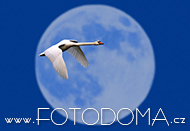Pálava Bird Area

Gig_4200395 © Fotodoma.cz
Palava and Klentnická skála, Klentnice rock, Palava Protected Landscape Area, Breclav district, Jihomoravsky region, Czech Republic, Europe
Special Protection Area Pálava Bird Area
Size: 8539.3852 ha
Site code: CZ0621029
Altitude: 164 - 548 meters above sea level
Region: South Moravian Region
Coordinates: 48.831389N, 16.670278E
Longitude: E 16°40'13''
Latitude: N 48°49'53''
Special protected area Pálava is located in southern Moravia by the borders with Austria and includes the city of Mikulov. Part of the bird area is also Pálava Protected Landscape Area (chráněná krajinná oblast Pálava, CHKO), four national nature reserves (národní přírodní rezervace, NPR) – Děvín, Křivé jezero, Slanisko u Nesytu and Tabulová, six nature reserves and four natural monuments. It is also part of Dolní Morava Biospheric Reserve.
All the bird area has very various biotopes. Dominating feature of the landscape are Pavlov Highlands (Pavlovské vrchy) consisting mainly of lime stone located between Dolní věstonice and Mikulov. Typical biotopes here are forest-steppe and rocky and turfy steppes. On the east lies Milovice Upland (Milovická pahorkatina) with deep valleys. Utterly different type of landscape are floodplain biotopes alongside the river bank of Thaya (Dyje). Large part of the area consists of farmland, mainly vineyards. Regarding to diverse natural conditions is flora and fauna one of the most various in all the Czech Republic.
There is specially protected eight bird species – the white stork (Ciconia ciconia), the collared flycatcher (Ficedula albicollis), the white-tailed eagle (Haliaeetus albicilla), the barred warbler (Sylvia nisoria), the Syrian woodpecker (Dendrocopos syriacus), the middle spotted woodpecker (Dendrocoptes medius), the red-backed shrike (Lanius collurio) and the European honey buzzard (Pernis apivorus). The white stork is nesting regularly in two different environments – in municipalities of Mikulov, Pavlov, Dolní Věstonice and Bulhary and in NPR Křivé jezero. The collared flycatcher is a numerous species and in the Milovický les is also supported by uphanging of dozens of bird boxes. The white-tailed eagle is mainly staying over the winter, but it is also nesting there. The barred warbler is relatively common species in the bushes of steppes. The Syrian woodpecker is nesting mainly in the open countryside and in the cities in the parks and cemeteries, utterly avoiding contiguous forests. The middle spotted woodpecker likes deciduous forests, mostly oak woods and oak-hornbeam woods in the Milovice Forest (Milovický les) and floodplain forests in NPR Křivé jezero. The red-backed shrike is a common species in its habitats, which are mainly bushes in the steppes but also along the roads. The European honey buzzard is not very common, but regularly nesting bird.
Other species in this area is the greylag goose (Anser anser), the great cormorant (Phalacrocorax carbo), the corn bunting (Emberiza calandra, Miliaria calandra) and the Eurasian wryneck (Jynx torquilla). In Milovice forest (Milovický les) is located the most significant breeding place of the hoopoe (Upupa epops) in the Czech Republic. Pavlov Highlands (Pavlovské vrchy) is the only place where the wallcreeper (Tichodroma muraria) is staying over the winter. Among birds of prey are frequent the common buzzard (Buteo buteo) and the northern goshawk (Accipiter gentilis), others are the black kite (Milvus migrans) and the red kite (Milvus milvus).
Ptačí oblast Pálava (next information in Czech language)
Demarcation of area (map works only in some browsers)


